Industrial Session
Industrial Session I: Technologies and Devices for the Networked Society
13:30-15:30, October 28 (Wednesday), 2015
| Time | Title | Invited Speakers |
|---|---|---|
| 13:30-15:30 | Technologies for the Networked Society | Dr. Youngjoon Kim Senior Vice President Head of R&D, Ericsson-LG |
| Evolution of LTE-Advanced in 3GPP Rel-13/14: a Path to 5G | Dr. Juho Lee Master(VP) Samsung Electronics |
|
| New Technologies for Next Generation Mobile Devices | Dr. Te-Won Lee President Qualcomm |
Invited Talk 1: “Technologies for the Networked Society”
Dr. Youngjoon Kim, Senior Vice President, Head of R&D, Ericsson-LG
Abstract:
After a speedy evolution of mobile network and mobile industry from the 1st generation of voice communication to the recent 4th generation of LTE with data communication, 5G is one of the globally hot topics recently. ITU-R, 3GPP and other standard bodies recently started discussion on 5G standards. METIS, 5GPPP, IMT2020PG, Future forum, 5GMF and 5G forum collaborate for their 5G technology leadership. This talk introduces the Networked Society vision realized with 5G technologies. The Networked society will be depicted with the life style change, industry trend and application evolution. In addition, the requirements for Networked Society will be investigated. The 5G technology is described as a supporting technology for the realization of the Networked Society. 5G technology developments are not limited to the wireless communication itself but also network architecture, device, application, management and eco-system. This talk shows the 5G technology evolution status and direction with candidate technologies from the perspective of access/network technology and global harmonization.
After a speedy evolution of mobile network and mobile industry from the 1st generation of voice communication to the recent 4th generation of LTE with data communication, 5G is one of the globally hot topics recently. ITU-R, 3GPP and other standard bodies recently started discussion on 5G standards. METIS, 5GPPP, IMT2020PG, Future forum, 5GMF and 5G forum collaborate for their 5G technology leadership. This talk introduces the Networked Society vision realized with 5G technologies. The Networked society will be depicted with the life style change, industry trend and application evolution. In addition, the requirements for Networked Society will be investigated. The 5G technology is described as a supporting technology for the realization of the Networked Society. 5G technology developments are not limited to the wireless communication itself but also network architecture, device, application, management and eco-system. This talk shows the 5G technology evolution status and direction with candidate technologies from the perspective of access/network technology and global harmonization.
 |
Biography: Dr. Youngjoon Kim is currently Senior Vice President of Ericsson-LG and Head of R&D. And he is a leadership member of Ericsson North East Asia R&D. Before joining Ericsson-LG, He held the position as Head of R&D LG-Nortel from 2008. He was named Vice President in 2002 and responsible for Mobile Communication Research Division, LG-Electronics Korea. From 2000, he has led several global joint R&D projects with Alcatel-Lucent, Nortel, LG-Electronics and Korea Government. He received his Ph.D. degree in Computer Science from Korea University. |
Invited Talk 2: “Evolution of LTE-Advanced in 3GPP Rel-13/14: a Path to 5G”
Dr. Juho Lee, Master (VP), Samsung Electronics
Abstract:
The wireless cellular network has been one of the most successful communications technologies of the last three decades. Following the great commercial success of LTE-Advanced as the fourth generation (4G) networks, the research community is now increasingly looking beyond 4G and into future 5G technologies both in standardization body such as 3GPP, and in research projects such as the EU FP7 METIS. While today’s commercial 4G LTE-Advanced networks are mostly deployed in legacy cellular bands up to 3.5 GHz, the mobile industry is looking forward to utilizing any spectrum opportunities below 100 GHz in 5G, including existing cellular bands, new bands below 6 GHz, and new bands above 6 GHz including the so-called mmWave bands. It is expected that decisions for new spectrums below 6 GHz and above 6 GHz would be made in World Radio-communication Conference (WRC)-2015 and in WRC-2019, respectively. From a technology evolution perspective, two parallel paths are expected to take place for evolution towards 5G. The first path is the continued evolution of LTE-Advanced in Rel-13/14 and beyond in a backward compatible manner with the goal of improving system performance in the bands below 6 GHz. The second path is to develop a new RAT which is not limited by backward compatibility requirements and can integrate breakthrough technologies to achieve best possible performance. The “new RAT” track is also expected to have a scalable design that can seamlessly support both above and below 6 GHz bands. This talk will focus on a set of important features of LTE-Advanced that are expected to be specified in 3GPP Rel-13/14. The features that would already be specified in Rel-13 include Full Dimension MIMO (FD-MIMO) for drastic increase of spectral efficiency via use of a large number of antennas at the base station, Licensed Assisted Access (LAA) for utilizing unlicensed spectrum while guaranteeing coexistence with existing devices, carrier aggregation with up to 32 component carriers, and further cost reductions for MTC devices that can also support extended coverage. While Rel-13 features would naturally be further enhanced in Rel-14, it is already anticipated that latency reduction and technologies for vehicle-related services (V2X) would become important features in Rel-14.
The wireless cellular network has been one of the most successful communications technologies of the last three decades. Following the great commercial success of LTE-Advanced as the fourth generation (4G) networks, the research community is now increasingly looking beyond 4G and into future 5G technologies both in standardization body such as 3GPP, and in research projects such as the EU FP7 METIS. While today’s commercial 4G LTE-Advanced networks are mostly deployed in legacy cellular bands up to 3.5 GHz, the mobile industry is looking forward to utilizing any spectrum opportunities below 100 GHz in 5G, including existing cellular bands, new bands below 6 GHz, and new bands above 6 GHz including the so-called mmWave bands. It is expected that decisions for new spectrums below 6 GHz and above 6 GHz would be made in World Radio-communication Conference (WRC)-2015 and in WRC-2019, respectively. From a technology evolution perspective, two parallel paths are expected to take place for evolution towards 5G. The first path is the continued evolution of LTE-Advanced in Rel-13/14 and beyond in a backward compatible manner with the goal of improving system performance in the bands below 6 GHz. The second path is to develop a new RAT which is not limited by backward compatibility requirements and can integrate breakthrough technologies to achieve best possible performance. The “new RAT” track is also expected to have a scalable design that can seamlessly support both above and below 6 GHz bands. This talk will focus on a set of important features of LTE-Advanced that are expected to be specified in 3GPP Rel-13/14. The features that would already be specified in Rel-13 include Full Dimension MIMO (FD-MIMO) for drastic increase of spectral efficiency via use of a large number of antennas at the base station, Licensed Assisted Access (LAA) for utilizing unlicensed spectrum while guaranteeing coexistence with existing devices, carrier aggregation with up to 32 component carriers, and further cost reductions for MTC devices that can also support extended coverage. While Rel-13 features would naturally be further enhanced in Rel-14, it is already anticipated that latency reduction and technologies for vehicle-related services (V2X) would become important features in Rel-14.
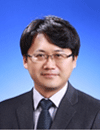 |
Biography: Dr. Juho Lee is currently a Master with Samsung Electronics and is the lead executive in charge of research on standardization of wireless communications. He received his B.S., M.S., and Ph.D. degrees in electrical engineering from Korea Advanced Institute of Science and Technology (KAIST), Korea, in 1993, 1995, and 2000, respectively. He joined Samsung Electronics in 2000 and has been working on standardization of mobile communications for 3G and 4G such as WCDMA, HSDPA, HUSPA, LTE, and LTE-Advanced and is also actively working on research and standardization for 5G. He was a Vice Chairman of TSG RAN WG1 during February 2003 through August 2009, chaired LTE/LTE-Advanced MIMO sessions, and served as the Rapporteur for the 3GPP LTE-Advanced Rel-11 CoMP work item. |
Invited Talk 3: “New Technologies for Next Generation Mobile Devices”
Dr. Te-Won Lee, IEEE Fellow, Vice President, Qualcomm
Abstract:
This talk will present current state-of-the-art technologies in smart phones and how key mobile trends influence the mobile communication industry. Those trends include a strong push in wireless innovation, a new computing paradigm and the emergence of the era of the digital sixth sense. Qualcomm is innovating in all technology vectors that contribute to the next generation smart phone devices. This talk will present key technologies developed in corporate R&D and also research undertaken in the Korea R&D Center focusing on new mobile multimedia solutions including audio, vision and machine learning technologies. Furthermore, this talk will touch upon new market opportunities such as automotive, healthcare and wearables.
This talk will present current state-of-the-art technologies in smart phones and how key mobile trends influence the mobile communication industry. Those trends include a strong push in wireless innovation, a new computing paradigm and the emergence of the era of the digital sixth sense. Qualcomm is innovating in all technology vectors that contribute to the next generation smart phone devices. This talk will present key technologies developed in corporate R&D and also research undertaken in the Korea R&D Center focusing on new mobile multimedia solutions including audio, vision and machine learning technologies. Furthermore, this talk will touch upon new market opportunities such as automotive, healthcare and wearables.
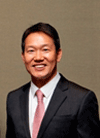 |
Biography: Dr. Te-Won Lee (IEEE Fellow) is President of Qualcomm Korea and Head of the Qualcomm Korea Research Center where he oversees the research and development in multimedia technologies for mobile devices. Prior to Qualcomm, Dr. Lee was Chief Executive Officer (CEO) and co-Founder of SoftMax, Inc., a start-up company in San Diego which was acquired by Qualcomm. Dr. Lee was a professor at the Institute for Neural Computation at the University of California, San Diego (1999 - 2007), a research associate at the Salk Institute for Biological Studies (1997-1999) and a Max-Planck Institute fellow (1995-1997). He received his M.S. degree in 1995 and his Ph.D. degree in 1997 with Summa Cum Laude in Electrical Engineering from the University of Technology Berlin. |
Industrial Session II: Spectrum, Systems, and Technologies for the 5G Era
13:10-15:10, October 29 (Thursday), 2015
| Time | Title | Invited Speakers |
|---|---|---|
| 13:10-15:10 | The Virtuous Cycles of Spectrum, Economy, Engineering, and Theory toward the 5G Era | Dr. Byung K. Yi Executive Vice President, CTO InterDigital |
| Huawei 5G Vision and Progress | Dr. Tsuyoshi Kashima CTO, Mobile Network Huawei Technologies, Japan |
|
| 5G Mobile Communication System and Enabling Technologies | Dr. Byoung-Hoon Kim Vice President LG Electronics |
Invited Talk 4: “The Virtuous Cycles of Spectrum, Economy, Engineering, and Theory toward the 5G Era”
Dr. Byung K. Yi, Executive Vice President, CTO, InterDigital
Abstract:
The 4th Generation wireless communication systems, such as LTE and Wi-Max, have been successfully combining the traditional mobile applications mainly serving circuit switched voice services with the IP-based internet-type of packet data services. Currently, mobile users can enjoy not only voice calls, but also video conferencing, instant messaging, broadcasting, multi-media services, and location-based services. However, demand for wireless broadband is outpacing the foreseeable availability of new spectrum. While FCC have outlined the a path for almost doubling the available spectrum for fixed and wireless broadband uses, some industrial experts forecasted a need for a thousand-fold increase in wireless capacity by 2020. To meet this demand, next generation 5G wireless systems should explore not only to increase the spectral efficiency bits/sec/Hz through new theories but also exploring the ways to operating the system with much intelligent ways. This presentation will go over the fundamental approaches of “Dynamic Spectrum Sharing”, “Interference Alignment”, “Location Based Intelligent Network Operations (LoBINO)”, and “Dense Network” trying to link the theory, the economy, Engineering, and the spectrum.
The 4th Generation wireless communication systems, such as LTE and Wi-Max, have been successfully combining the traditional mobile applications mainly serving circuit switched voice services with the IP-based internet-type of packet data services. Currently, mobile users can enjoy not only voice calls, but also video conferencing, instant messaging, broadcasting, multi-media services, and location-based services. However, demand for wireless broadband is outpacing the foreseeable availability of new spectrum. While FCC have outlined the a path for almost doubling the available spectrum for fixed and wireless broadband uses, some industrial experts forecasted a need for a thousand-fold increase in wireless capacity by 2020. To meet this demand, next generation 5G wireless systems should explore not only to increase the spectral efficiency bits/sec/Hz through new theories but also exploring the ways to operating the system with much intelligent ways. This presentation will go over the fundamental approaches of “Dynamic Spectrum Sharing”, “Interference Alignment”, “Location Based Intelligent Network Operations (LoBINO)”, and “Dense Network” trying to link the theory, the economy, Engineering, and the spectrum.
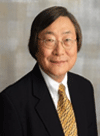 |
Biography: Dr. Byung K. Yi is InterDigital’s Executive Vice President, InterDigital Labs, and Chief Technology Officer (CTO). As Head of InterDigital Labs, Dr. Yi is responsible for directing the development of advanced wireless and network technologies, the evolution of standards-based technologies and the company’s participation in wireless standards bodies. Dr. Yi joined InterDigital in April 2014 from the Federal Communications Commission (FCC), where he had served as assistant division chief of engineering since 2012. Prior to his appointment at the FCC, Dr. Yi was at LG Electronics from 2000 to 2012, where as Senior Executive Vice President he headed the company’s North American R&D center. A former member of InterDigital’s Technology Advisory Council, Dr. Yi contributes more than 30 years of advanced wireless development experience. Dr. Yi also contributes a strong history of |
industry leadership. He has served on the board of directors or steering
committees of a number of professional organizations, including the
Telecommunication Industry Association, the Center for Wireless
Communications, the 3rd Generation Partnership Project 2 Technical
Specification Group, and a number of others. He was awarded the prestigious
CDG (CDMA Development Group) Industry Leadership award, has been recognized
by the National Engineer Week (NEW) Foundation, and inducted to the Hall of
Fame by the School of Engineering and Applied Science of George Washington
University. Dr. Yi received his Bachelor’s degree in Electrical Engineering
from Yonsei University (Korea), his Master’s degree in Electrical
Engineering from the University of Michigan, and his doctoral degree in
Electrical Engineering from George Washington University.
Invited Talk 5: “Huawei 5G Vision and Progress”
Dr. Tsuyoshi Kashima, CTO, Mobile Network, Huawei Technologies, Japan
Abstract:
With the quick devolvement of mobile internet and Internet of Things (IoT), mobile broadband will permeate all areas of the society and the users expect a better blueprint for a networked world. 5G will have fundamental impact on the ICT industrial transformation and human life. As to be a key enabler of the future digital world, 5G is to be an ultimate platform for a connected world to enable new ways of innovation and collaboration and to create new opportunities. In this talk, we will share Huawei’s vision and views on 5G, present Huawei 5G research progress, and introduce Huawei 5G progress with industry.
With the quick devolvement of mobile internet and Internet of Things (IoT), mobile broadband will permeate all areas of the society and the users expect a better blueprint for a networked world. 5G will have fundamental impact on the ICT industrial transformation and human life. As to be a key enabler of the future digital world, 5G is to be an ultimate platform for a connected world to enable new ways of innovation and collaboration and to create new opportunities. In this talk, we will share Huawei’s vision and views on 5G, present Huawei 5G research progress, and introduce Huawei 5G progress with industry.
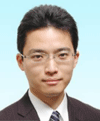 |
Biography: Dr. Tsuyoshi Kashima is the CTO of mobile network in Huawei Japan. He received the B.S. and M.S. degrees in theoretical physics from Tokyo University. After joining Nokia Research Center, Tokyo in 2000, he was engaged in system level research on 3G, and also engaged in PHY and MAC research and standardization on 4G. He received his Ph.D. degree from Tokyo Institute of Technology in 2007 in the area of the MAP receiver architecture utilizing iterative joint processing utilizing message passing algorithm. Since 2008 November, he joined Huawei, and works in the Marketing and Solution Sales Department, and since 2015, he has been working in the current position. |
Invited Talk 6: “5G Mobile Communication System and Enabling Technologies”
Dr. Byoung-Hoon Kim, Research Fellow, Vice President, LG Electronics
Abstract:
4G LTE/LTE-Advanced communication system has been successfully providing mobile broadband internet and multimedia services during the last several years. Although the LTE/LTE-Advanced system is expected to prevail in the market for far more years, wireless communication industries have already started to discuss developing and standardizing a 5G mobile communication system. Main drivers of the 5G system are rapidly growing mobile traffic, immersive multimedia services, mission critical IoT applications, and massive device connectivity. In this talk, we first introduce the differentiation point of the 5G system in terms of services, terminals, and networks and then discuss the potential of new radio technology candidates such as massive MIMO, mmWave, low latency radio, flexible/full duplex radio, V2X, new waveforms, and the others. Finally, we investigate the expected standard and deployment milestones and the 4G-to-5G transition strategies, including the roles of 4G evolution technologies and new radio technologies in the 5G system.
4G LTE/LTE-Advanced communication system has been successfully providing mobile broadband internet and multimedia services during the last several years. Although the LTE/LTE-Advanced system is expected to prevail in the market for far more years, wireless communication industries have already started to discuss developing and standardizing a 5G mobile communication system. Main drivers of the 5G system are rapidly growing mobile traffic, immersive multimedia services, mission critical IoT applications, and massive device connectivity. In this talk, we first introduce the differentiation point of the 5G system in terms of services, terminals, and networks and then discuss the potential of new radio technology candidates such as massive MIMO, mmWave, low latency radio, flexible/full duplex radio, V2X, new waveforms, and the others. Finally, we investigate the expected standard and deployment milestones and the 4G-to-5G transition strategies, including the roles of 4G evolution technologies and new radio technologies in the 5G system.
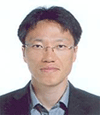 |
Biography: Dr. Byoung-Hoon Kim received the B.S. and M.E. degrees in Electronics Engineering, and the Ph.D. degree in Electrical Engineering and Computer Science, from Seoul National University, Korea, in 1994, 1996, and 2000, respectively. From 2000 to 2003, he was with GCT Semiconductor, Seoul, Korea, developing W-CDMA and WLAN chip sets. From 2003 to 2008, he was with Qualcomm, Incorporated, San Diego, CA, where he was responsible for MIMO technology development and 3GPP LTE standard and design works. Since March 2008, he has been with LG Electronics as Vice President and Research Fellow, developing advanced wireless technologies including 5G mobile communications and 3GPP standard for future wireless systems. He was also involved in IEEE 802.11ac/af/ah standard works and was a member of board of directors of Wi-Fi Alliance during |
2011-2012. Dr. Kim is co-author of Scrambling Techniques for CDMA
Communications (Springer, 2001) and was elected as the 1st IEEE
Communications Society Asia-Pacific Best Young Researcher in 2001.
